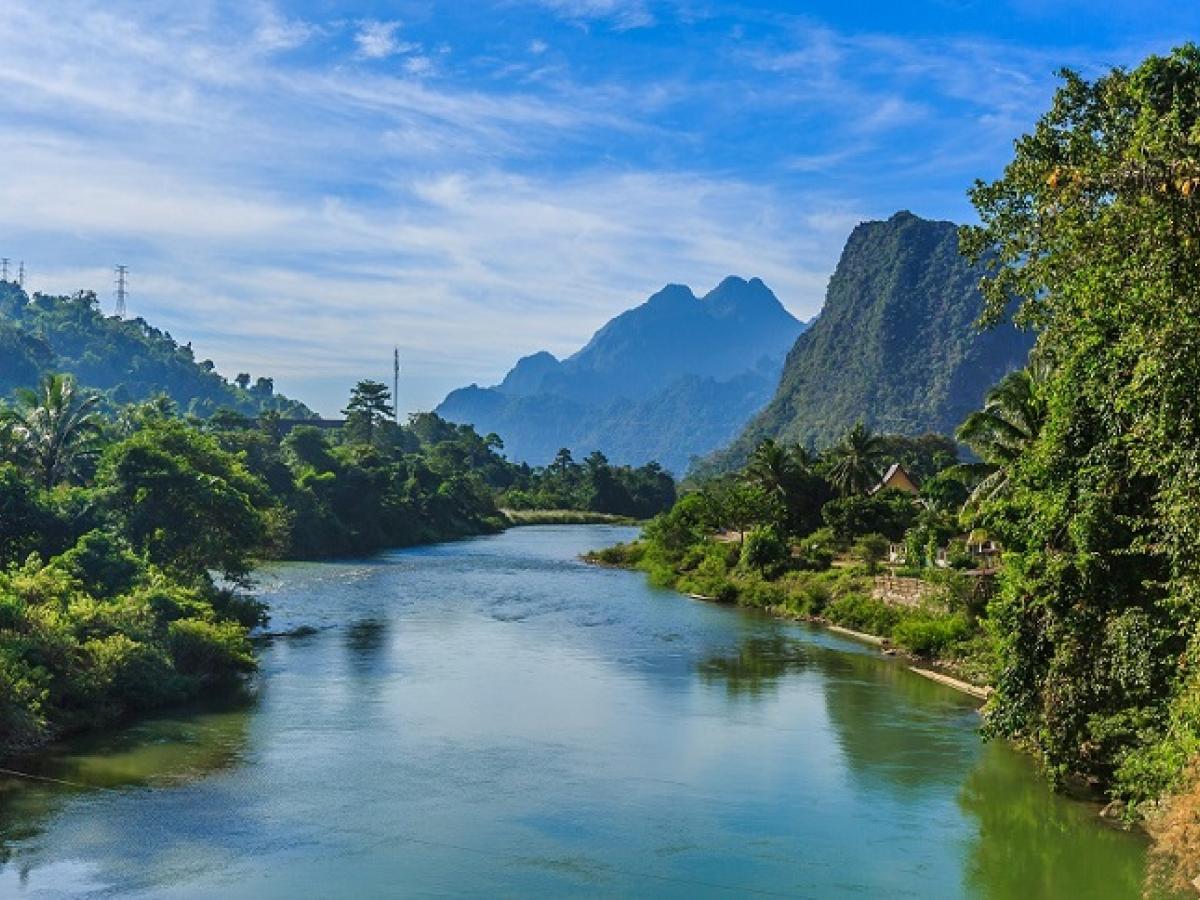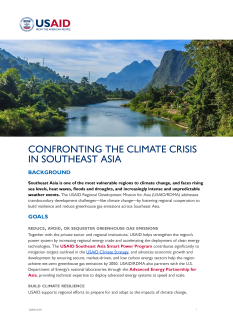Southeast Asia is one of the most vulnerable regions to climate change, and faces rising sea levels, heat waves, floods and droughts, and increasingly intense and unpredictable weather events. The USAID Regional Development Mission for Asia (USAID/RDMA) addresses transboundary development challenges—like climate change—by fostering regional cooperation to build resilience and reduce greenhouse gas emissions across Southeast Asia.
GOALS
Reduce, avoid, or sequester greenhouse gas emissions
Together with the private sector and regional institutions, USAID helps strengthen the region’s power system by increasing regional energy trade and accelerating the deployment of clean energy technologies. The USAID Southeast Asia Smart Power Program contributes significantly to mitigation targets outlined in the USAID Climate Strategy, and advances economic growth and development by ensuring secure, market-driven, and low carbon energy sectors help the region achieve net-zero greenhouse gas emissions by 2050. USAID/RDMA also partners with the U.S. Department of Energy’s national laboratories through the Advanced Energy Partnership for Asia, providing technical expertise to deploy advanced energy systems at speed and scale.
Build climate resilience
USAID supports regional efforts to prepare for and adapt to the impacts of climate change, contributing to the Agency’s target to strengthen the resilience of 500 million people by 2030. SERVIR Southeast Asia, in partnership with NASA, works with regional institutions to integrate satellite technologies into demand-driven tools that improve decision making related to droughts, floods, food security, air quality, and land use management. USAID also supports regional institutions to mitigate any negative impacts of key infrastructure on ecosystems and local communities, particularly in the energy and transportation sectors. The USAID and Australia Mekong Safeguards Program promotes stronger environmental and social governance standards for infrastructure development to increase investments in sustainable infrastructure.
Mobilize climate finance and sustainable investments
USAID/RDMA’s energy portfolio targets the mobilization of $2 billion in blended financing for clean energy infrastructure. To address a leading cause of greenhouse gas emissions in Southeast Asia–unsustainable agriculture and land use–USAID Green Invest Asia mobilized private finance from companies and financial institutions operating across the region to support more sustainable supply chains and land use investments. The project, which ended in 2023, laid the foundation for USAID Partnerships for Green Investment, subsequent programming in nature based solutions set to launch in 2024. USAID/RDMA’s projects contribute significantly to USAID’s goal of mobilizing $150 billion in climate finance by 2030.
Increase equitable and locally-led climate action
In Southeast Asia, climate change disproportionately impacts already marginalized and underrepresented communities. Aligned with the Climate Strategy’s principles of equity, inclusion, and locally-led development, USAID Mekong for the Future works to enhance civil society engagement in policy development, oversight, and advocacy. In addition, USAID Enhancing Equality in Energy for Southeast Asia improves gender equality in the energy sector to advance women’s economic empowerment and strengthen energy institutions.
KEY RESULTS
- Launched a $3 million partnership framework between the USAID Southeast Asia Smart Power Program and the ASEAN Centre for Energy to increase the regional renewable energy share and the installed renewable energy capacity to 23 percent and 35 percent, respectively, by 2025
- Developed 21 decision support tools through SERVIR-Mekong (a program from 2014-2022 that laid the foundation for SERVIR Southeast Asia), leading to the training of more than 1,500 people, mobilization of $500,000 of investment, and the adoption of four policies to improve climate resilience
- Unlocked $446 million in climate financing through USAID Green Invest Asia’s work in the agriculture and land use sectors, reducing a projected 156 million tons of carbon dioxide equivalent and improving the sustainable management of 1.7 million hectares of land
- Engaged in drafting, through a collaboration between Mekong For the Future and the ASEAN Intergovernmental Commission on Human Rights, of the first-ever environmental rights framework for the region


